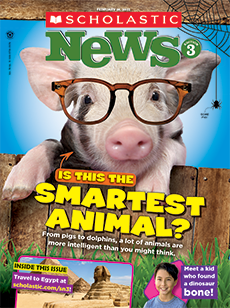1. How did scientists figure out that Velociraptor was not as big as a person?
Scientists figured out that Velociraptor was not as big as a person by studying Velociraptor bones found in Asia.
(RI.3.1 Text Evidence)
2. What common myth about T. rex does the article prove is wrong?
The article proves that the common myth that T. rex was a fast runner is wrong. In reality, this dinosaur probably ran only about 12 miles per hour, slower than many track athletes.
(RI.3.2 Key Details)
3. Why do scientists say it’s unlikely they could bring dinosaurs back from the dead?
Scientists say it’s unlikely they could bring dinosaurs back from the dead because that would require a dinosaur’s DNA. Dinosaur DNA is at least 66 million years old. That’s too old to be recovered.
(RI.3.8 Cause/Effect)
